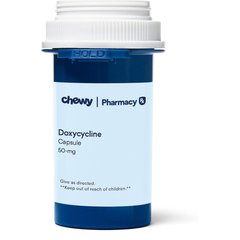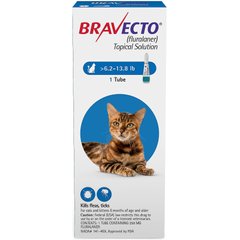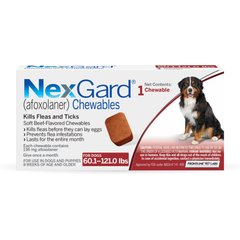Flea Bites: 4 Diseases These Parasites Can Spread
kobkik/iStock / Getty Images Plus via Getty Images
Fleas are tiny insects that are found in the environment, such as in grass, fields, and wooded areas but can even be in the crevices within your home. Fleas survive by taking blood meals from susceptible animals, such as dogs or cats. One flea can lay as many as fifty eggs per day so it’s easy to see how they can quickly become a serious concern.
Fleas transmit a surprising number of diseases to animals and humans through their bites or when they are ingested (such as when self-grooming).
Let’s look at four types of diseases that can be spread by fleas.
1. Typhus
According to the Texas Department of State Health Services, humans usually get typhus from flea bites. Two types of fleas —the Oriental rat flea and the cat flea—become carriers of the disease after biting rats, cats, or opossums.
When the fleas bite, they usually defecate at the same time. A type of bacteria found in the feces, Rickettsia typhi, enters the body through the bite wound or from a person scratching the bite area and causes typhus.
Symptoms of typhus include:
-
Headache
-
Fever
-
Nausea
-
Body aches
-
Reduced appetite
-
Coughing
-
Vomiting
Five or six days after the initial symptoms, a rash may appear on the trunk of the body and spreads to a person’s arms and legs. The disease can be treated with antibiotics, but if treatment is delayed, hospitalization may be needed. If left untreated, typhus may linger for several months.
2. Mycoplasma haemofelis
Mycoplasma haemofelis (M. haemofelis) is a parasitic bacterial disease that is transmitted to cats through tick, mosquito, and flea bites. An infection of the red blood cells, M. haemofelis can cause fever and anemia in cats.
There is also some evidence that M. haemofelis can infect humans, especially those with compromised immune systems. Because fleas get their meals from a variety of hosts, an infected flea can transmit the parasite to both you and your pet.
M. haemofelis attaches to and destroys red blood cells. This destruction of large numbers of red blood cells leads to anemia in both cats and people.
Veterinarians often prescribe antibiotics, such as doxycycline, to treat pets with Mycoplasma haemofelis. In severe cases, cats may need a blood transfusion.
Recommended Products
3. Tapeworms
Tapeworms are harmful parasites that make themselves at home in the intestines of dogs, cats, and humans. Pets can get tapeworms by swallowing infected adult fleas, which can occur when they groom themselves or other animals.
Cats can also get the disease by eating infected rodents.
Adults and more commonly, children, may get infected by accidentally swallowing an infected flea, which they can encounter while spending time outdoors, according to the Centers for Disease Control and Prevention (CDC).
Children and pets pass segments of tapeworms, known as proglottids, during bowel movements.
Cats with tapeworms are given a drug called praziquantel orally or by injection. The medication causes the tapeworm to dissolve within the intestines.
4. Cat Scratch Disease
Bartonella henselae (B. henselae)—the bacteria that causes cat scratch disease and is spread through flea bites—is common in felines. The CDC reports about 40% of cats, especially kittens, will encounter this disease at some point in their lives.
Most cats who contract this disease do not become sick. Their immune systems are able to control the infection. If they do show symptoms, it is usually a fever that lasts a couple days and resolves.
However, immunocompromised cats, such as those undergoing chemotherapy or who have underlying FeLV/FIV, may develop more serious symptoms, which can include the following:
Even if a cat isn’t showing symptoms and seems healthy, they can still make you sick. Cats pass this disease on to humans by biting or scratching a person hard enough to break the skin, or by licking on or near wounds or scabs.
According to the CDC, cat scratch disease can affect the human brain, eyes, heart, or other internal organs—though these rare complications are more likely to occur in children under the age of five and in people with compromised or weakened immune systems.
How To Rid Your House of Fleas
Fleas are difficult to get rid of once they make their way into your home.
They can gain access to your home by attaching to your clothing or hopping in through windows or open doors. They find tiny cracks and crevices to live in while feeding on vulnerable pets or people.
The most important way to keep fleas out of the house is to protect your pets with preventatives. Pet parents should use a flea preventative year-round, even in indoor only cats.
A few products that are effective include Bravecto® and NexGard®. Your veterinarian can recommend the best product to meet your pet's individual needs.
All cats and dogs in the household should be on preventatives.
Recommended Products
Regular vacuuming and washing pet bedding can remove any fleas that do find their way into your home before they can cause problems.
There are also indoor sprays that can be safely used within the home to repel and kill fleas. Likewise, treating the yard is helpful in keeping fleas out of the lawn. It is important to only use products that specifically designed to be safe around pets.
Recommended Products





